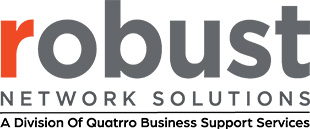The year is wrapping up, but personal resolutions aren’t the only thing on your mind. If you’re smart, you aren’t waiting around — you’re on the hunt for IT planning steps you can implement now.
With 2024 on the horizon, businesses of all sizes are deciding how to tackle their future IT needs. But effective planning demands foresight and a willingness to readjust. Here are some strategies you can put into action today.
4 Best Practices for Developing and Implementing an IT Plan
Strategic IT planning can be tricky in today’s world of plenty. There are countless business technologies to choose from, and the options are growing exponentially. It’s best to lay some ground rules before adopting new IT tools.
1. Quantify Where You Stand to Ease the Transition
Treat your IT endeavors like any other project. Be sure you have the numbers to back them up and the tools to keep yourself honest.
According to Gartner, 80% of CIOs will use performance metrics to gauge IT sustainability by 2027. The real lesson here, however, is a bit more subtle.
Smart companies build robust metric-gathering frameworks before adopting new strategies. AI is a great example — Intel reports that automation and machine learning are prime territory for business optimization. But diving in blind is a surefire way to lose sight of the end goal.
Whether you’re aiming for faster IT support ticket closure, reduced production-floor process waste, or less server downtime, you should ground your plan in quantifiable data. Ensure your plan accommodates streamlined performance monitoring and data aggregation. You want accurate, instantaneous feedback to be the default.
2. Plan for Human Errors and Missteps
Proper human capital management is a cornerstone of applying your tools and systems efficiently. Ask yourself:
- Is your IT team beholden to one individual who happens to be the only person with full knowledge of how it all works?
- Can you control access to systems, devices, and data on a case-by-case basis?
- Do you have a well-defined incident action plan with clear stakeholder roles?
- Can decision-makers deploy new projects on demand and count on them to scale up?
These aren’t technology-exclusive issues. They boil down to the policies you institute to control how people use technology. Take a good look at your organizational structure to limit fallout when things go sideways and get more mileage out of what works.
3. Outsource Your Security Operations
Human errors cause most IT breaches. BYOD policies, thorough onboarding, and workforce training are all fantastic preventative measures, but the reality is that security is a full-time job. Sometimes, things will slip by — and you might lack the capacity to respond.
Outsourced IT shines when it comes to security and regulatory compliance. Dedicated security operations centers help you adapt to evolving threats, reduce costs, and deploy new safety features. They also help you rise to the occasion in a world where hackers increasingly use AI and scripts to exploit vulnerabilities en masse.
4. Exercise Cloud Flexibility
Should your IT systems be on-premises or in the cloud? This is a trick question: Many businesses have realized the answer is a bit of both.
Hybrid solutions — with some systems in the cloud and others on-site — may offer the best of all worlds. For instance, manufacturers with factory-floor IoT networks often simplify life by warehousing their data in remote clouds.
Multi-cloud setups — where you use more than one cloud vendor — are also rising. Cloud providers like Amazon, Google, and Microsoft all have distinct pros and cons. It’s not a one-size-fits-all problem, so let your technology stack be your guide.
How to Align Your IT Plan With Your Business Goals
IT trends don’t happen in a vacuum. It’s easy to get swept up when your peers and competitors leverage technology in novel ways.
But there’s a problem. If you don’t prioritize alignment, you’ll end up on a hype train headed somewhere you’d rather not go. Here are some actionable ways to keep your IT strategy and business goals on the same track:
- Get front-line stakeholders involved early. Want to learn where your IT systems could improve? Solicit feedback from those who use them daily.
- Use existing business and project goals to inform your IT plan. This is also a great way to discover relevant metrics and experiment.
- Plan for each adoption. Creating a master strategy is great, but each project deserves an independent game plan. For instance, if you’re migrating to a new cloud, do you have a backup strategy if something goes wrong mid-transition?
How to Budget for IT in 2024
Spiceworks’ 2024 State of IT study revealed that 66 percent of companies plan on growing their IT budgets despite ongoing recession concerns. But where should you be spending your money?
Good IT budgeting is, again, a matter of metrics. Break performance down at the organizational and project levels to ensure you’re making the right investments at the best possible times.
Many companies neglect fine-grained IT budget diligence, but there’s no excuse for doing so. After all, most cloud computing dashboards and network monitoring tools make it easy to track stats like power consumption and server costs. The information is already out there; it’s up to you to put it to use.
How to Choose the Right IT Solutions for Your Business
Future-proofing your IT plan is easier with the aid of expertise. From picking new technologies to optimizing existing solutions, talking to a managed IT services expert makes the process smoother.
Want to kick off 2024 on the right foot? Get a head start by chatting with the Robust Network Solutions team.

